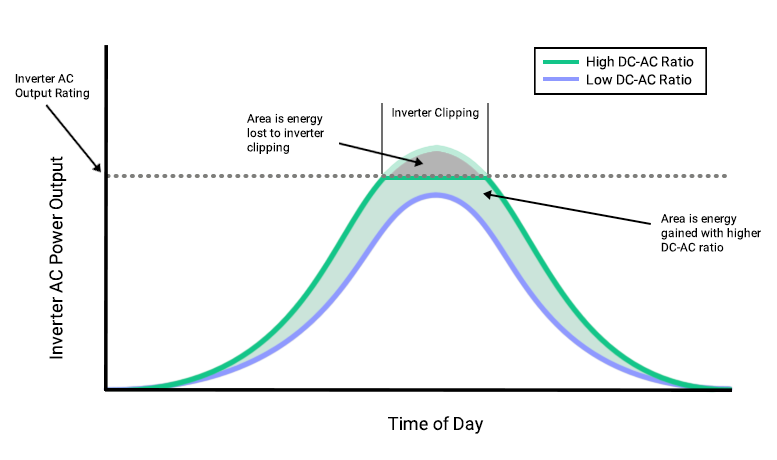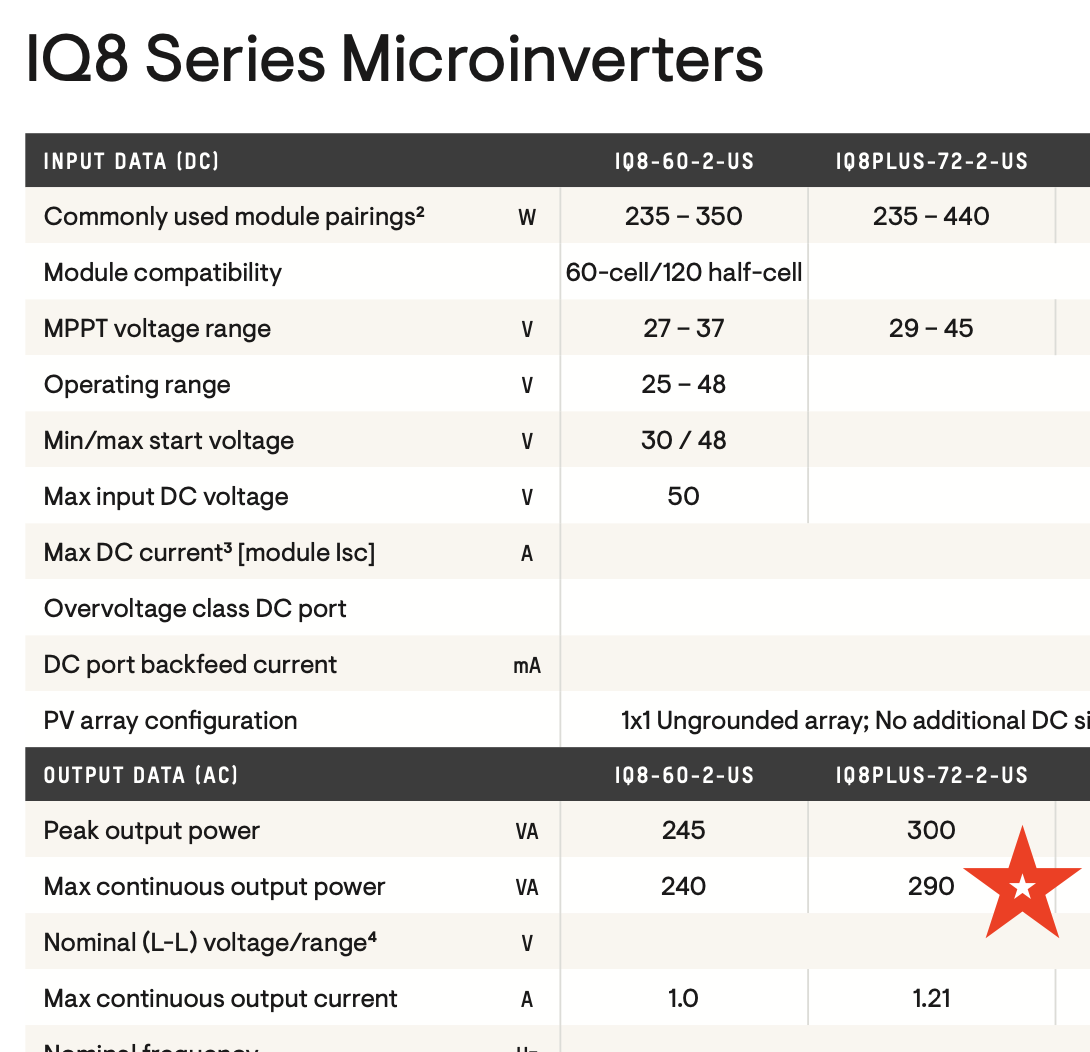We’ve had a lot of sunny days lately, the kind you’d think would be the best for producing solar energy. But instead, sunny days for us sometimes mean we’re getting calls from customers asking why their system isn’t producing maximum power at solar noon. This is often because of a phenomenon called inverter clipping.
What is inverter clipping?
Solar inverter clipping happens when solar panels provide more power than an inverter can handle. The result is a daily production graph with a “flat-top” which shows that the microinverters are maxed out even though the panels have the capacity to produce more energy at that specific time. While it seems counterintuitive, oversizing panels versus inverters is actually a standard industry practice and is in fact a benefit for the end-user.
Why is inverter clipping a benefit?
Factors to consider when matching panel rating to inverter capacity
Over the course of a year, there are more cloudy or partially cloudy days than perfect blue-bird sky days. Therefore, having a panel that can turn the inverter on earlier will create more power and savings in low-light scenarios. Oversizing a solar panel also accounts for dust and soiling on the panels and environmental factors such as shade, clouds, pollen, and rain.
Additionally, because most solar arrays are not always facing directly south at a perfect angle with no shade, a larger solar panel will maximize the inverter’s productivity. Using an inverter’s sizing capability in such a way can deliver greater overall energy output, and a more leveled AC output each day.
 Image courtesy of Aurora Solar App.
Image courtesy of Aurora Solar App.
As you can see from the graph above, by oversizing a PV array, the inverter can reach its rated AC (usable energy) capacity earlier in the day, and continue operating at that point until late in the afternoon. The light blue shading shows how the overall energy produced is greater in this setup than you would get if the panel rating exactly matched the inverter capacity.
Microinverter Datasheet
Here is a screenshot of the Enphase Datasheet: (keep in mind that these Enphase microinverters keep changing and improving over time)

Reach out to us with questions any time!
We’re always happy to discuss and assess the performance of your system and to ensure that it is working for you. Please reach out to us any time to discuss the optimization of your solar energy system!




